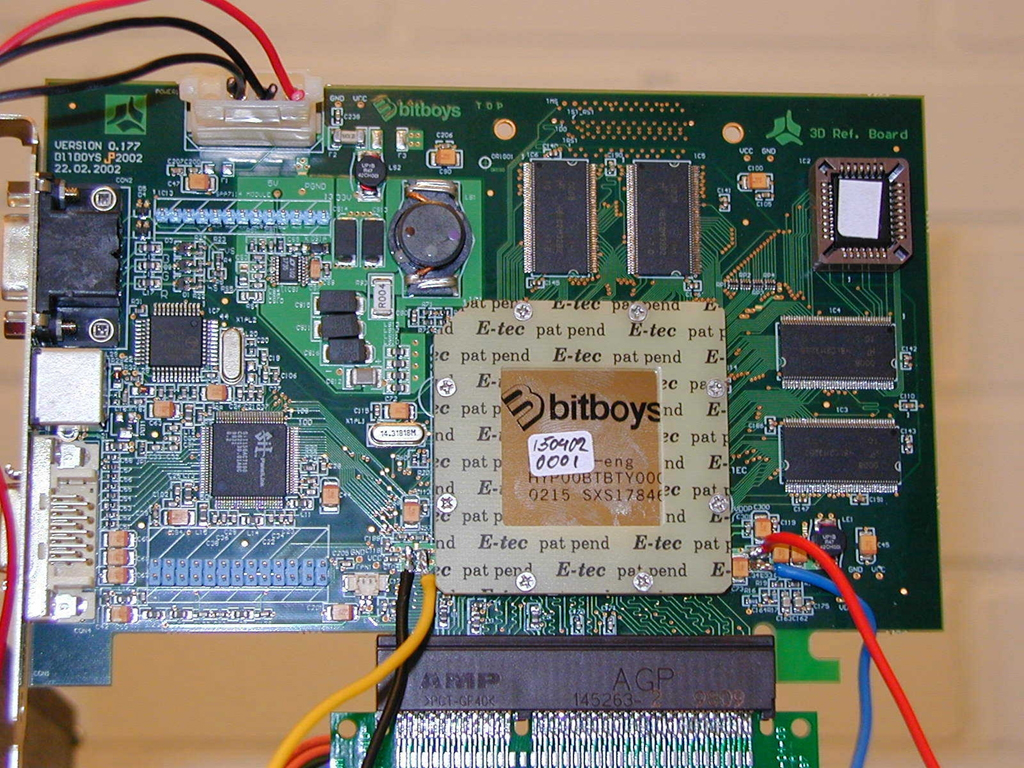Mobile: Intel Will Overtake Qualcomm In Three Years
From High-End To Mobile Graphics
Kaj Tuomi, Mika’s brother, started work on developing software that would allow a programmer to code a unit in C and then have automated tools that converted into VHDL, which could then be used to make actual chips incorporating the design. Clock-accurate simulation capabilities let them build their chips in a software simulator before actually doing work. As the 3D graphics world changed, this meant it was easier for them to adapt. Glaze3D became Axe, and the promised performance was even higher.
And then BitBoys got screwed again.
This all happened back in 2001, during the first dot com crash. Memory prices were dropping quickly and Infineon, the only factory in the world that could manufacture Axe, was going to shut down its embedded DRAM unit. This meant that BitBoys had a functional chip that couldn’t be manufactured by anyone. (Incidentally, this is the same problem Qualcomm faces by gambling on a foundry with gate-first high-K). But Axe wasn’t vaporware either. A limited number of Axe chips were produced before the end of Infineon’s embedded DRAM business so that BitBoys could show venture capitalists what they were capable of doing.
You can’t keep a demo coder down.
The team started working on Hammer, which would have been a flagship PC graphics product. This proved to be a challenge for the small team because, in 2002, Nvidia had its GeForce 4 and ATI was selling its Radeon 9700/9800—some of the best products ever seen from the two companies. Somewhere along the way, Nokia approached them. They did a Finnish secret handshake and the BitBoys started working on a design for a mobile graphics chip. Thanks to Kaj’s early work with the C-based chip development system, they were able to quickly code a mobile GPU and export it to a FPGA, a programmable general-purpose chip. Even though it wasn’t actual silicon, performance was superb. BitBoys had found its niche.
By 2006, the company was purchased by ATI and driving the Imageon product line-up. After ATI and AMD merged, Imageon was sold off to Qualcomm in 2009, meaning about 50 employees were transferred from AMD Finland to Qualcomm Finland.
And that’s where Adreno comes from, built with legendary BitBoys technology. The Adreno 225 that’s going to be the used in the initial Krait CPU is supposed to beat the Apple A5 with its PowerVR SGX 543MP2 at high resolutions. Both PowerVR SGX 543MP2 and Adreno 225 are faster than Tegra 3’s graphics performance, through Nvidia insists that its investment in extra CPU power will prove more valuable in the long-run.
Get Tom's Hardware's best news and in-depth reviews, straight to your inbox.
Current page: From High-End To Mobile Graphics
Prev Page The Crazy Story Of BitBoys Next Page The Prestige